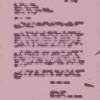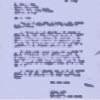What is the story of the discovery of gold?
Transcript
In a sense, it's a simple tale of discovery and then panic and then a fever and then a rush, but it's a much more complex tale of human emotion and the migration of peoples and the transformation of a continent, so in this little fleck of gold, about a quarter inch wide, we have a huge story. In this particular case, it's the story of a first find. James Marshall, a traveler from New Jersey, sets up a shop as a woodwright and a millwright in the hills of California knowing that the settlements there need lumber, need services like he offers. He offers his labor to Captain Sutter, John Sutter, an immigrant Swiss businessman who set up a fort in a somewhat utopian village, a village called New Helvetica near Sacramento. Sutter employs Marshall to build a sawmill on part of his land, land that he has in a sort of soft way leased from the Mexican government in California. Keep in mind that in the early 1840s, there was no state of California. It was a part of Mexico. The Russians had loose interests in it and, of course, the native Indian population occupied the land, multiple layers of ownership. So, into this mix comes Marshall and his sawmill and in January of 1848, while working on the sawmill, he inspects the work and through the rippling waters of the south fork of the American River, he sees something yellow glimmering, a yellow morsel he calls it later. He stoops down to pick it up. He bites it. He walks to the shore and pounds it between rocks and he determines that it's gold. James Marshall has found gold in northern California. He carries this gold a few days later to his boss, to Captain Sutter, at Sutter's fort in Sacramento and they conduct further tests on this metal. They use acids. They read up in little books that he has and it mushrooms from there. A few days, a few weeks later, a man named Sam Brennan waves a bottle of this yellow metal in the streets of San Francisco. "Gold," he cries, "gold from the American River." Clearly, Sam has an angle of some kind and he has a business angle, but, in fact, that cry kicks off what we know today as the gold rush.Source
Interview with David Shayt, National Museum of American History, May 31, 2006.

